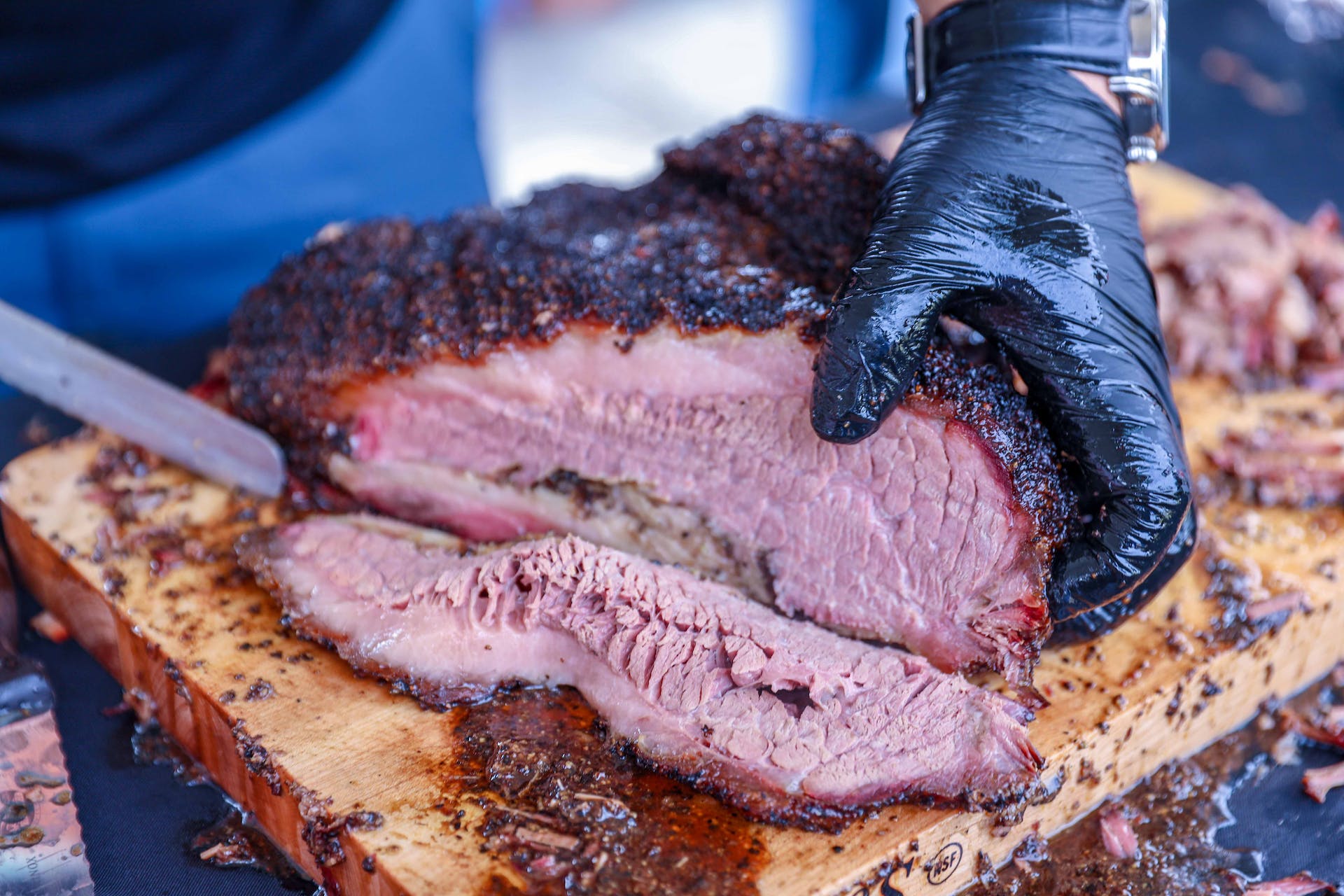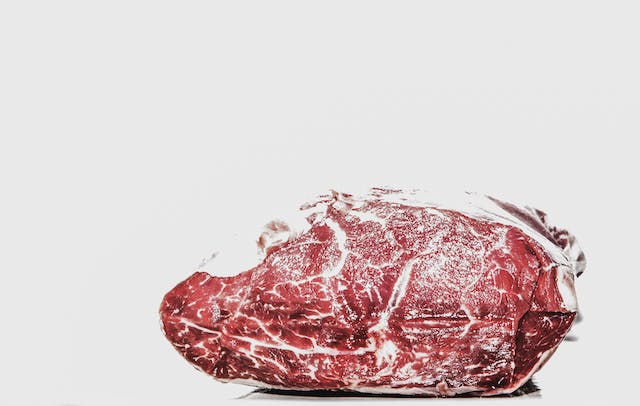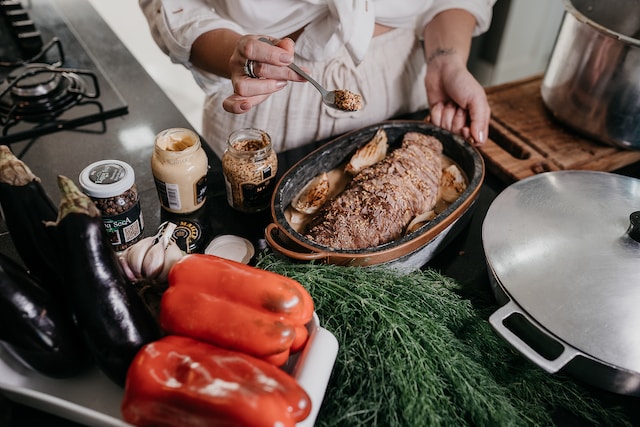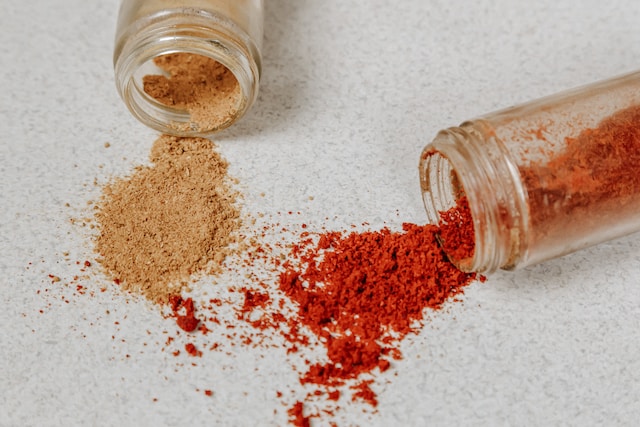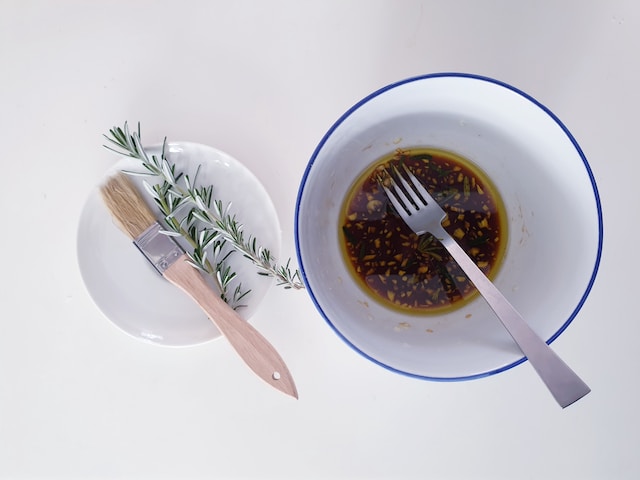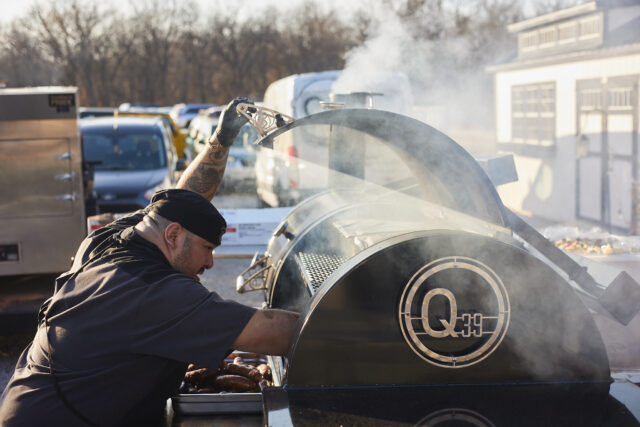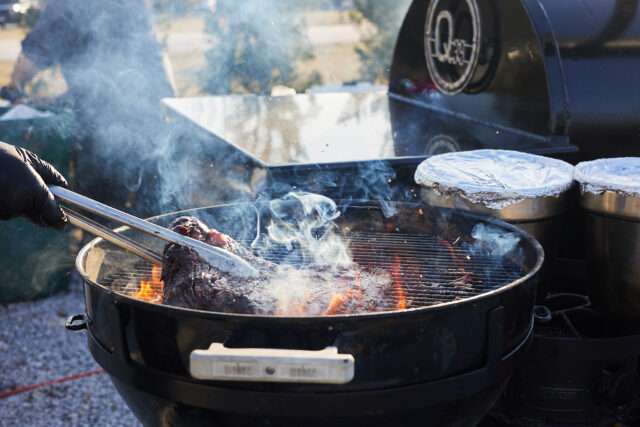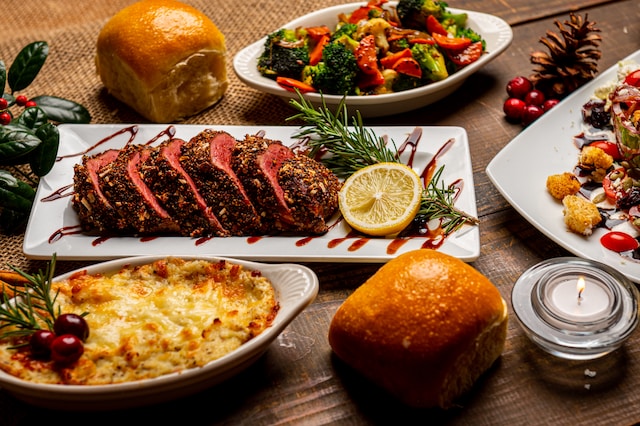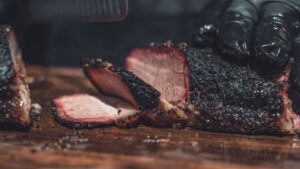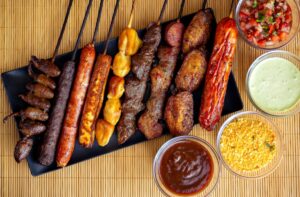BBQ, a culinary tradition that transcends borders, has been bringing people together over smoky grills and savory meats for generations. At the heart of this gastronomic community are the revered BBQ pitmasters, experts who harness the power of fire and smoke. Infusing every cut of meat with a unique blend of flavors, they’ve mastered what it takes to captivate the taste buds and elevate BBQ to a celebrated art form.
Central to BBQ culture is the brisket, a cut of meat that holds an esteemed place on the smoker’s rack. As the holiday season approaches, the seasoned smokiness of this dish becomes an ideal culinary choice for shared meals and festive gatherings. Brisket serves as a versatile canvas that pitmasters skillfully transform into a symphony of tastes and textures. To unlock its full potential, this meat demands skill, patience, and a deep understanding of the smoking process. In this comprehensive guide, we delve into the essential aspects of crafting the perfect brisket with tips from Q39’s Executive Chef, Patrick Peluso—understanding the nuances of selecting, preparing, and cooking this crowned cut and achieving a delicious result meant for sharing with all. No matter the season, brisket can be the star of your table and bring joy to every celebration.
Understanding Brisket
Derived from the lower chest or breast area of a cow, the brisket embodies a unique balance of lean muscle and rich marbling. Understanding the intricacy of brisket involves acquainting oneself with its distinct sections. The whole packer, the Cadillac of briskets, includes both the point and the flat. The point, known for its higher fat content, contributes to succulence and a luxurious mouthfeel. On the other hand, the flat is leaner, making it an ideal cut for those seeking a leaner slice. Selecting high-quality brisket is paramount to achieving a good brisket. Opting for well-marbled meat ensures a moist and flavorful outcome after hours of slow smoking. Specifically, look for briskets with a consistent fat cap and even marbling, indicating a cut that will render beautifully during the smoking process. Remember, the quality of the brisket laid on the smoker is the foundation upon which the entire barbeque experience is built.
How Long to Cook a Brisket
Crafting the best brisket involves a meticulous approach that demands both skill and patience. The general cooking times for brisket are often based on a combination of weight and temperature. Many say that the key to creating quintessential barbeque lies in the art of low and slow cooking. With this technique, smokers are set to temperatures ranging from 225°F to 250°F. At lower temperatures, plan for around 1 to 1.5 hours of cooking time per pound of brisket. This deliberate practice allows the collagen in the meat to break down gradually, resulting in a tender and flavorful finish.
During this process, a meat thermometer becomes your trusted ally. While general cooking times provide a helpful framework, the true measure of time is the internal temperature of the brisket. Aim for an internal temperature of around 195°F to 205°F in the thickest part of the meat. Using a meat thermometer not only guarantees the ideal level of doneness but also prevents the common pitfall of overcooking, which can result in a dry and tough brisket.
Elevating Flavor: Unleashing the Power of Brine, Rub, and Marinade
Brining:
Enhancing the tender juiciness of brisket begins with brining. This method involves submerging the meat in a seasoned mixture of salt and water, imparting a depth of moisture that penetrates to the core. The salt in the brine not only seasons the meat but also breaks down its muscle fibers, ensuring a delicate and succulent result. The beauty of brining lies in its versatility. Experiment with various brine recipes, considering ingredients like kosher salt, sugar, herbs, and spices. Classic combinations include a savory blend of garlic and thyme or a sweet and spicy fusion with brown sugar and cayenne pepper. The ideal brining time for brisket is typically 12 to 24 hours. Ensure the brisket is refrigerated during this time and fully submerged in the brine, either in a food-grade plastic bag or a non-reactive container.
Brisket, when done right, is nothing short of a celebration on a plate. According to Q39’s Executive Chef, Patrick Peluso, the secret starts with a premium cut of Certified Angus Beef and a little respect for the process. With careful trimming, a thoughtfully balanced rub, and just the right kiss of smoke, brisket transforms into a rich, flavorful centerpiece that gathers people around the table, rain or shine, season after season.
Rub:
A well-balanced rub is the secret to a flavorful crust on the brisket. Comprising a blend of spices, herbs, and seasonings, the rub plays a pivotal role in creating a delicious exterior to lock in moisture. Explore a spectrum of rub ingredients to tailor the taste profile to your liking. Common elements include salt, paprika, garlic powder, cumin, and brown sugar, as included in Q39’s brisket rub. Whether you prefer a sweet and smoky rub or a spicier kick, the choice is yours. Applying the rub evenly is crucial for a consistent, savory experience. Ensure the brisket is dried thoroughly before applying the rub, allowing it to adhere properly. Patience is essential – let the rub sit on the meat for at least an hour before beginning the cooking process.
Chef Patrick Peluso says, “A balanced rub should be bold enough to boost flavor, yet subtle enough to let the beef shine. The final flourish? Patience that coaxes out deep, smoky richness and that coveted melt-in-your-mouth magic.”
Marinade:
For those seeking an extra layer of flavor, marinating the brisket overnight can be a game-changer. This technique involves immersing the meat in a flavorful liquid, allowing it to soak up the marinade’s essence. Consider marinades featuring ingredients like soy sauce, Worcestershire, garlic, and citrus for a savory and tangy infusion. Alternatively, a honey and Dijon mustard blend provides a sweet and slightly acidic twist. Experiment with different combinations to find the perfect match for your palate. Ensure the brisket is refrigerated to prevent bacterial growth.
Ways to Cook a Brisket – Brisket Basics:
Smoker:
Smoking imparts an authentic BBQ flavor, combining the richness of the wood with the natural juices of the brisket. This method encompasses a variety of types, each boasting a distinctive charm and functionality. Offset smokers provide an indirect cooking approach, vertical smokers offer efficient space utilization, and electric smokers grant precise temperature control. No matter which kind you choose, achieving the ideal temperature and selecting the right wood are crucial steps in the smoking method.
Step-by-Step Smoking Instructions:
- Prepare the Brisket: Trim excess fat and apply your chosen rub evenly, about 1 to 1 1/2 cups per brisket.
- Preheat the Smoker: Aim for a low-and-slow temperature range of 225°F to 250°F. Chef Patrick says, “consistency is more important than chasing exact numbers.”
- Select Wood: Opt for hardwoods like hickory, oak, or post oak for a clean, bold smoke profile. “Too much smoke or resinous woods can turn brisket bitter,” says Chef Patrick.
- Place the Brisket: Position it fat side up on the smoker grates.
- Maintain Temperature: Regularly monitor and adjust the smoker to maintain a consistent temperature.
- Add Wood as Needed: Introduce wood chunks or chips periodically for a steady infusion of smoky goodness. It’s important to add charcoal and wood occasionally, as too much wood will give the brisket a bitter taste.
- Patience is Key: Smoking times vary but anticipate around 30-minutes to 1.5 hours per pound, depending on the smokers temperature.
- Maintain Moisture: Once you have a good “bark” on the outside, wrap the brisket in aluminum foil or butcher paper with a little beef au jus. This will help keep the meat juicy.
- Check for Doneness: Utilize a meat thermometer, aiming for an internal temperature of 195°F to 205°F.
- Rest: Remove the brisket from the foil to stop the cooking process and allow to cool for 10-minutes. Wrap in plastic wrap and leave to rest for around 30 to 45-minutes. Allowing the brisket time to rest will help prevent all the juices from running out when you slice.
Charcoal Grill:
Attaining BBQ mastery on a charcoal grill requires honing the skill of indirect heat cooking. To set up, create a two-zone fire by placing the charcoal on one side of the grill, leaving the other side empty. This arrangement allows for controlled, slow cooking without direct heat exposure. Equip yourself with a reliable meat thermometer, a drip pan to capture drippings, and a water pan to uphold humidity for a moist cooking environment. Consistent temperature management is crucial during brisket grilling. Use the thermometer to monitor and maintain the grill’s temperature within the desired range. Enhance the smoky essence by introducing wood chips, such as hickory or mesquite, for that distinctive flavor infusion into your brisket.
Oven:
For those without access to a smoker or grill, the oven offers a viable alternative. While it may lack the open flame, with careful attention to detail, you can achieve a smoky quality reminiscent of traditional BBQ. For this method, preheat the oven to a moderate temperature, around 250°F, mirroring the low and slow cooking philosophy. To impart a smoky character, consider using liquid smoke or smoked salt in your seasoning, ensuring it is evenly distributed over the brisket. Place the seasoned and prepared brisket on a rack inside a roasting pan and tightly cover it with foil to retain moisture. During the cooking phase, periodically baste the brisket with a mixture of water and liquid smoke or a sprinkle of smoked salt for an added layer of flavor.
A Yuletide Tradition: Brisket for Christmas
Christmas in the United States is a time of diverse traditions and celebrations, and one culinary delight that has firmly established itself on many American Christmas dinner tables is the beloved brisket. In this section, we’ll explore how brisket became a cherished Christmas tradition in the United States and delve into the time-honored methods of preparing this mouthwatering centerpiece for festive American feasts.
The Rise of Christmas Brisket in America:
- Influences from Eastern European Immigrants: The tradition of serving brisket during Christmas in the United States owes much to the Eastern European Jewish immigrants who settled here in the late 19th and early 20th centuries. Bringing their culinary heritage with them, they often incorporated brisket into their holiday meals. As Hanukkah, a Jewish holiday, frequently coincided with Christmas, brisket found its place on the holiday table.
- Affordability and Flavor: During economically challenging times, such as the Great Depression, brisket’s affordability made it a popular choice for holiday gatherings. Families could come together and enjoy a delicious, hearty meal without straining their budgets.
- Slow-Cooking Tradition: Another reason for brisket’s association with Christmas in America is its suitability for slow cooking. The long, slow cooking process allowed families to prepare the dish in advance, ensuring that the festive feast would be ready to enjoy on Christmas Day, with minimal stress and fuss.
For Freedom, For Barbeque: Fourth of July Brisket
The Fourth of July is a time when Americans come together to celebrate their nation’s independence with fireworks, parades, and, of course, delicious food. One culinary tradition that has firmly established itself as a Fourth of July favorite is the beloved brisket. In this section, we’ll explore how brisket became a cherished Fourth of July tradition in the United States and delve into the time-honored methods of preparing this mouthwatering centerpiece for festive American barbeques.
The Birth of Fourth of July Brisket in America:
- Barbeque Heritage: The tradition of serving brisket during Fourth of July celebrations in the United States is deeply rooted in the country’s rich barbeque heritage. Barbeques have long been a cornerstone of American culture, and brisket’s slow-cooking qualities make it a natural fit for this holiday.
- Regional Influences: Different regions of the United States have their own unique barbeque traditions, and brisket plays a starring role in several of them. In Texas, for example, smoked brisket is an iconic dish that has become synonymous with Texan barbeque culture. This regional influence has spread nationwide, contributing to the popularity of brisket on the Fourth of July.
- All-American Flavors: Brisket’s smoky, savory, and tender qualities embody the flavors that Americans associate with a classic Fourth of July celebration. Its ability to bring people together around the grill or smoker makes it the perfect centerpiece for Independence Day festivities.
The quest to master the perfect brisket is a culinary adventure filled with rich palates and aromatic smokiness. From the selection of the right cut and seasonings to the time and manner of cooking, let this guide serve as your compass but not your constraint on your own brisket journey. Experiment with different techniques, flavors, and methods—let your taste buds guide the expression of your culinary artistry. Patience is your companion, and practice is your ally. As you embark on this seasoned endeavor, may the smoke rise, the aromas captivate, and the flavors linger—an ode to the timeless tradition of barbeque excellence.
“Brisket isn’t just a meal,” says Chef Patrick Peluso with a grin. “It’s a love letter to patience, a smoky symphony of flavor that takes time to perfect. When it’s done right, it’s not just about filling plates––it’s about filling hearts and making memories, one tender bite at a time.”
If you need more inspiration, head on over to Q39 to try a plate of our competition-style sliced-to-order brisket, straight out of the smoker.


